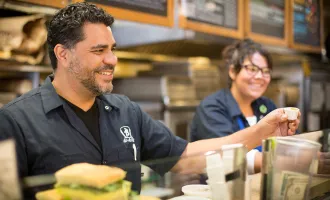My Traditional Lunar New Year Away from Home
Growing up Chinese-American, I found myself caught between two cultures: the American culture I was born into, and the one that I inherited, the Chinese culture.
At an early age, my parents taught me to embrace both, but most importantly, to hold onto the good morals and positive celebrations from each culture. Thus, they put me in weekend Chinese school for a couple of years, although I do not recall much.
The Lunar New Year was one of the most important celebrations in my family growing up. Not only because it is widely celebrated for centuries around the world, but also because of the customs and traditions behind it and the positive message it brought into our lives. It taught me to value and cherish my family and to respect my elders by remembering to pay respects to my ancestors. Traditionally, families would feast but also leave a portion of it for their ancestors, visiting them at the burial site and burning incense. Since my family burial sites were across the Pacific, we left that part out, but we never forgot to keep them with us during the celebratory dinner.
Before everyone gathered for the annual dinner, which occurs before the Chinese New Year’s Day, my family needed to prepare the house for guests. One of these preparations was to thoroughly clean the house. This signified getting rid of all bad luck and fortune from the year before, and to bring in the good luck from the New year. Some years my family would make paper ornaments out of red envelopes and hang them around the house, celebrating the good fortune that we are to have in the next year.
New Year’s dinner would always be one of the most delicious meals of the year; I would look forward to my grandmother and mother’s cooking for weeks. Everyone in the family would gather; cousins who I had not seen in a year would come, and the dinner table would always be filled with laughter and warm conversations. It is also tradition for the daughters of the family, if married, to return to their parents’ homes as well.
The feast always consisted of a variety of meats and seafood; my mom always made sure fish was on the table, which signified fortune and abundance. Another one of my favorite dishes was Shaghainese nian gao, which is a flat sticky noodle, stir fried with vegetables and chicken to perfection. This dish, also known as New Year cake, was traditionally made in my household because its name sounded similar to prosperity and the new year in Chinese.
Red envelopes would also be passed out during dinner to the children from the family members. As a child, I would be so excited, as my parents would put in eight dollars, which made me feel rich and excited. Eight was a significant and lucky number, meaning that one would hope to bring in wealth for the New Year. After receiving these red envelopes, the children were told to put them under their pillows and to sleep on them. This carried over the good from the last year, and helped start the New Year with good luck and wealth.
This year, unfortunately, I did not get to go home to spend the Lunar New Year with my family. However, it did not deter my goal to have a celebratory dinner. My parents always taught me to hold my traditions close to heart, and so my boyfriend and I sought out to find a restaurant that made Shanghainese nian gao, which it turns out, is a difficult task to do in the heart of San Francisco. Nonetheless, we did end up finding one in Outer Sunset, and definitely enjoyed a scrumptious New Year dinner with each other.


